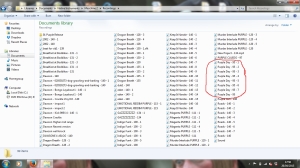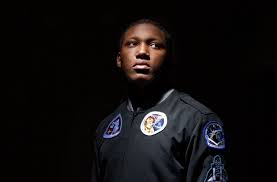Yesterday DMP’s resident Ewok Nicholas Young (AKA Yung Whippy) came into the cave room with me so that I could work on a soundtrack for his stop motion piece.
Nick had asked me right at the start of this unit if I could provide a soundtrack to his work. I accepted but the mixture of working on my own sounds for uni, working a job in the evenings and being a full time legend meant that I struggled to present him with any sounds. I decided it would be better and invited him to spend a day in the cave room with me which I would be purely dedicated on his soundtrack. I got in at around 10:00AM and got everything set up. About an hour later Nick turned up. From seeing his project’s set and models develop I knew that the story and visual aspects of his animation would be very dark. Below are some super high quality photos of his current set.
So having seen the development of these sets and his characters and knowing about the story behind his work I was confident that I could write a track to complement it. Nick told me that he wanted the sound of Vinyl records crackling throughout the whole piece. This was easy to achieve as My software has loads of ambient crackling samples in it already. I found one that was nice and subtle and then clipped a small section off of the end so it would loop seamlessly over 16bars. After this I loaded up a sub bass sound and ran a LFO (low frequency oscillator) through the noise so that it wasn’t just a continuous hum of bass. Then I added a Low Pass Filter to the sound and automated the intensity of the filter so It would give the impression that the Bass was rising and falling away into the Background.
This is what the different groups and scenes look like for the soundtrack to Nick’s animation.
Within each group are a number of sounds and FX buses.
The sound currently was to intense and would have been uncomfortable to listen to for most people so I reduced the low and mid-low E.Q. values a little. This is something I’ve been doing more regularly as I think I had gone from not having a enough bass in my tracks too pushing way too many low frequency sounds into a track. I’d noticed that This was making my tracks sounds really muddy through my headphones. After this I began to add some sounds which I connect with darkness and too an extent the idea of insanity. Something that I had picked up from the story behind Nick’s character. One of these sounds starts off as simple clap drum. usually from an 808 or 909 kit. Then I set the beat-grid in my software to 1/32 of a bar. (This means you can fit more sounds in a smaller amount of time. I then paint the sound into each new space within this bar. When the claps are played back with this new time signature. It sounds horrific and would be very painful to listen to at a high volume. However when you apply a Low Pass Filter to it and sweep it up and down subtly it can sound something similar to a helicopter’s blades passing overhead. Then I panned these filtered claps from left to right to bring a sense of space to this effect. I continued doing this with other sounds, the majority of them were other percussion instruments. The applied filter has to remain fairly strong throughout when this technique is used to make sure the high frequencies of the claps aren’t too piercing on the ears. The I ran some of these sounds through a Flanger. (Flangers can give a warping/robotic effect to some sounds).
Nick stated he wanted an almost robotic/ industrial feel to run subtly throughout so I thought this would add to that idea. After this I stated working on some subtle noises like drips and small metallic noises that echoed and reverberated around the audio space. I found some that i like and created small, unobtrusive melodies to add some higher frequency detail to the track. I uses a mixture of panning, BPM delays and reverbs to add a feeling of space and time to the project. Like I’ve been doing in my previous project I limited the amount of sounds that played through one area of the speakers at the same time. If I did layer two or more sounds to play together I’d make sure to offset them to the left or right sides of the speakers. Giving each noise more space in the mix. After this it was time to develop the track further so that it would complement the narrative of Nick’s animation.
He explained how he was going to create a montage within his work in which his character loses his mind and goes crazy. He wanted me to create this mood through within the track.
To do this I inserted some Kick Drums. I didn’t want ones that had a dancy feeling to them so I found some samples of an old kit in the Mashcine software that I liked. I took these into the piano roll and then Pitched them 4 octaves lower than they are originally set. This made them sound incredibly muddy so I filtered out some of the lower band frequencies to clean the sound up. Then I created a small drum pattern that used different pitches. The resulting beat I had was almost tribal in nature and very dark. I liked it a lot and Nick thought it worked really well when I played it alongside the ambient sections of the track. I wanted to push the sense of menace and rage further and so did Nick. I found a synth sound that I would usually associate with house music or trance, and experimented for a while with it. I applied some distortion, reverb and filters over the sound, which totally transformed it into an industrial drone. Then I pitched it down a few octaves lower and took some of the release and sustain values out of the noise so it would end more abruptly.

So as well as the distortial effect I also used a Frequency Modulator. Something I’ve used befor which can give a metallic buzz or screech to a sound.
It sounded really good and after adding some Feedback within the Distortion effect. I was happy with the sound and inserted it in to the timeline. The resulting composition was really effective and Nick loved it. I looped this sequence for 16 Bars. After this I calmed the track down a bit and revisited the ambient sections. I made some subtle percussion additions but apart from them the track remained the same as the intro. Nick then asked me to finish the track off with a climactic\ crazy mess of noises that would compliment his ‘death’ scene. To do this I copied and pasted the industrial pieces of the track and added and Grain Stretch effect. I don’t actually know the technicalities of what this effect actually does. All I know is that when applied and manipulated it turns all the sounds into a time stretched bowl of audio spaghetti that tangles up and warps in a crazy mess. Nick Seemed to like it though. So I faded it out to silence to mark the end of the main sound track.

You can also see that I lengthened the silence at the end of the beatgrid to allow time for the Grain Stretch effect to fade and filter out.
Here is the final track.
Nick then asked me to produces some small sound effects for him. One of these was the ambient sound to the laboratory he constructed. To do this I took a completely new approach to production. I turned the beat grid off so that nothing could be quantized. Essentially this can remove all structure or notion of beat to the track. I also lowered the tempo to 33BPM which is much slower than the a lot of music. Then I found some synth sounds and took all the release and most of the sustain values out of them so they were small glitchy beeps and blips of noise. Then I tapped as many keys and pads as possible with complete disregard for any type of musical scale. I was really surprised at how effective the result was. It sounded like a living community of computers talking to each other. The sound however was a little sharp so I added a small amount of reverb to the master channel and this gave everything a sense of space.

You can see here all the notes I’ve played for one of the many sounds in the piece. It was totally random. with no deliberate melody played as I wanted the track to sound as spontanious as possible.
Here is the Final Lab Ambience Track. It is only 8 Bars long and Nick will be easily able to loop it if he wants it longer.



























